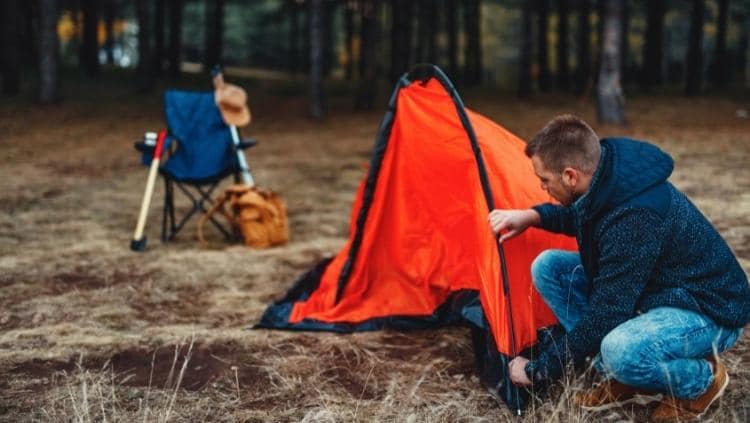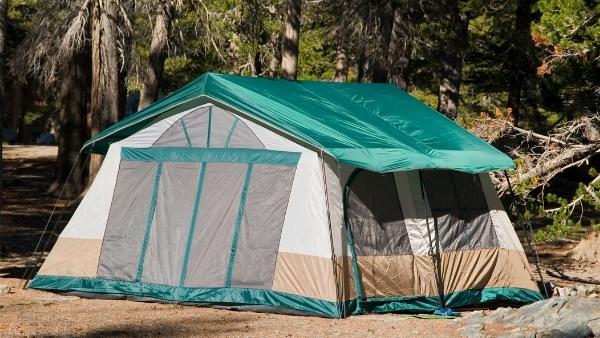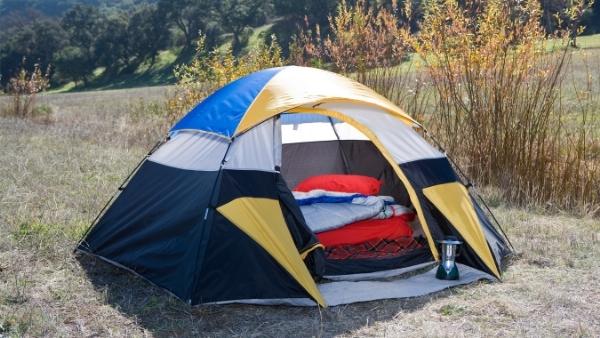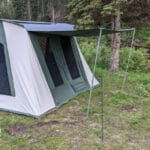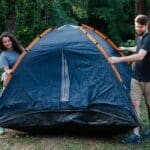If you’re looking to join the ranks of the 48 million Americans who go camping every year, choosing your first tent can be a daunting task. Your tent is one of your most important pieces of gear. The right choice can make your next trip enjoyable and comfortable or pretty miserable.
While there are many tent styles out there, designed for everyone from ultralight backpackers to dedicated traditionalists, the most common choice for car camping is a dome tent or cabin tent.
All tents serve the same fundamental purpose: to shelter you from the elements. But both cabin tents and dome tents each have their benefits and drawbacks.
For car campers, cabin tents generally offer the greatest comfort, the most features, and the best overall experience. However, dome tents are generally less expensive, more compact, and lightweight, making them easier to purchase and transport.
Regardless of your choice, a quality tent lets you experience the wonder of the great outdoors in a way that is sensitive to fragile ecosystems and uses fewer resources. There are key considerations to take into account when deciding which is better: a cabin tent or a dome tent.
What Is a Cabin Tent?
Cabin tents are generally spacious tents with large footprints and square sides that maximize headroom. They are usually designed to accommodate anywhere from two people to over a dozen and can also be specialized for certain uses such as hunting or winter camping.
Many cabin tents also have an awning for additional rain protection. Some even incorporate a fully screened patio area to keep out bugs and provide a dry area for cooking and relaxation.
Larger cabin tents can frequently be partitioned into separate rooms, allowing for greater flexibility and usable space. However, this comfort comes at the cost of greater packed size and weight.
Cabin tents are also available in a variety of materials, such as nylon or canvas. Nylon tents are generally lighter and less expensive than canvas tents which are more durable and weather resistant.
Related: 9 FAQs About Canvas Tents (Consider This Before You Buy)
What Is a Dome Tent?
A dome tent is a tent that uses arched poles for structure, generally tensioned against each other and the footprint of the tent. As a result of their arched structure, they aren’t very tall. You usually can’t stand up inside a dome tent, and the amount of usable headroom diminishes towards the sides of the tent.
Dome tents are also smaller overall, with the smallest barely having room for a single person lying down. Although, larger dome tents are available as well that can accommodate a small family on a budget.
Higher-end dome tents usually have a rainfly that extends all the way to the ground, providing some covered space outside of the tent called a vestibule that can be used for gear storage or cooking. While less-expensive dome tents have a small rain fly that sits on the top of a couple screen vents at the crest, with minimal coverage for inclement weather.
Differences Between Cabin Tents and Dome Tents
When comparing a cabin vs a dome tent, it is important to consider the benefits and drawbacks of each style.
Cabin Tents
Pros
- More usable area and volume inside
- Allow you to stand up inside
- Can accommodate more creature comforts (cots, heaters, tables, etc.)
- Provide more flexibility in terms of configuration
Cons
- Take up more space, both when packed and when set up
- Can be more challenging to set up
- Are usually more expensive
Dome Tents
Pros
- Can be relatively inexpensive
- Good resistance to rain, wind, and snow
- Pack down to a small size
- Can take advantage of smaller campsites
Cons
- Have less vestibule space
- You can’t stand up straight
- Sometimes you can’t even sit up straight
- Difficult, and often impossible, to fit cots and thick sleeping pads inside
- Are generally less comfortable
When To Use a Cabin Tent
If you are primarily going to be car camping and are worried about getting a comfortable night’s sleep in the great outdoors, a cabin tent provides the best overall experience.
They can comfortably fit many “luxury” camping items and can be especially useful if you are camping in rainy areas, as they are far more comfortable to relax in.
Cabin tents also make an excellent choice for families and large groups, as they can be configured into multiple rooms and are easier to set up for multiple people.
When To Use a Dome Tent
There are some cases where a dome tent can be your best option. If you are interested in backpacking but want greater flexibility, a smaller dome tent is the better option.
A dome tent can be separated into its constituent pieces and split between people to make it easier to carry into the backcountry while still providing acceptable comfort while car camping.
Dome tents can also be a cheap option for budget-conscious family or car campers. Dome tents of reasonable quality can even be found for less than $100. Due to their lower profile and footprint, they can also be designed to withstand more extreme weather than inexpensive flat-sided cabin tents. However, a high-quality canvas cabin tent can provide the best weather resistance of all.
Cabin vs Dome Tents, Which Is Better?
When asking which is better, a cabin tent or dome tent, cabin tents are the winner for many first-time campers. Most new campers will find that a cabin tent delivers an enjoyable camping experience while still remaining relatively easy to transport and set up. There are definitely cases where a dome tent is a better option, such as for solo travelers looking to pack light or those going on backpacking adventures.
However, when new campers compare cabin vs dome tent options, they are typically looking at comfort, flexibility, and space. Cabin tents deliver these in spades.
For those new to camping, cabin tents are the obvious choice — sacrificing comfort can make the difference between an experience that turns you off of camping and one that keeps you coming back for more.
We also suggest you check How To Select The Right Tent Size for Camping (+ Size Chart).
Related: Need a Groundsheet Under a Tent? (Here’s When You Do)

